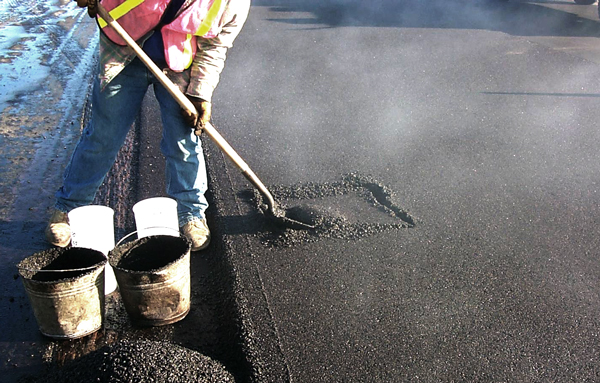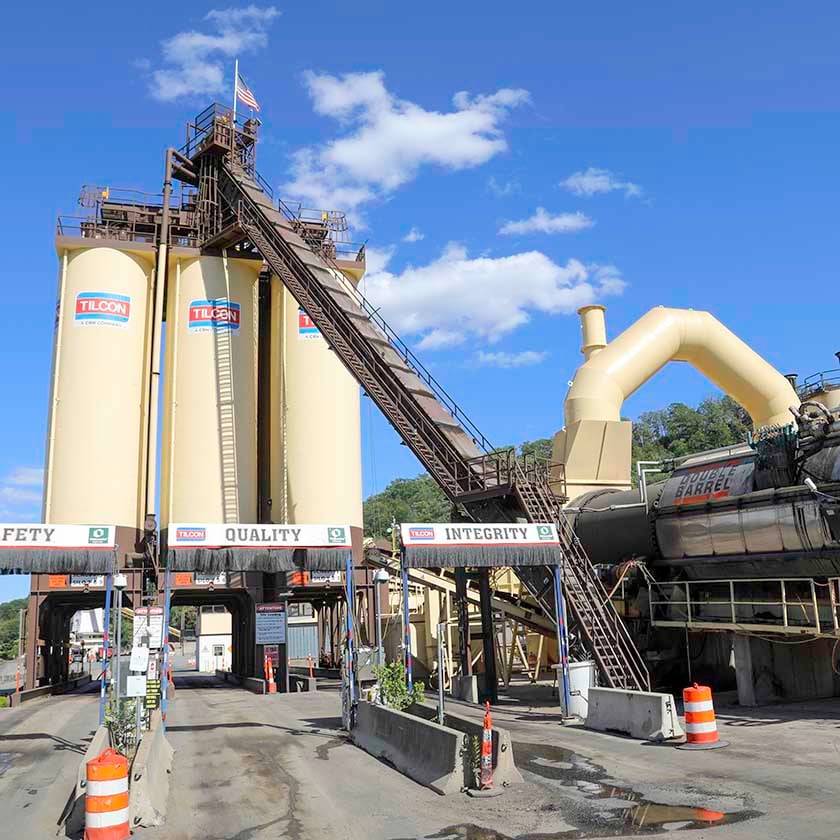Hot Mix Asphalt Paving: Redefining Commercial Building Landscapes
Hot Mix Asphalt Paving: Redefining Commercial Building Landscapes
Blog Article
Unlocking the Secrets of Hot Mix Asphalt Technology
Exploring the depths of warm mix asphalt innovation discovers a globe where thorough procedures and accurate formulations merge to shape our roadways and facilities. The fusion of fillers, binders, and accumulations isn't merely a building and construction job but a tactical orchestration of sturdiness and performance.
Relevance of Warm Mix Asphalt
Warm Mix Asphalt plays an essential duty in contemporary framework growth due to its sturdiness and cost-effectiveness. As one of the most generally made use of leading material for roads, freeways, and parking area, Warm Mix Asphalt supplies a variety of advantages that add to its relevance in construction projects. One crucial benefit is its capability to hold up against rush hour loads and severe climate condition, giving a reputable and long-lasting surface for transport networks. Additionally, Hot Mix Asphalt is economical in both initial building and construction and long-term upkeep, making it a recommended choice for several facilities projects.
The sturdiness of Warm Mix Asphalt originates from its structure, that includes aggregates, binder, and filler materials that are meticulously picked and mixed to meet details performance requirements. This accurate mix results in a strong and adaptable sidewalk that can endure constant usage without significant damage. Moreover, Warm Mix Asphalt is 100% recyclable, additional improving its sustainability and ecological benefits. Generally, the relevance of Hot Mix Asphalt in infrastructure advancement can not be underrated, as it remains to be a keystone of contemporary construction practices.
Components of Asphalt Mixes
The composition of asphalt mixes is composed of carefully picked accumulations, binder, and filler materials that are vital for achieving specific performance needs. Accumulations are the primary component of asphalt blends, providing strength and stability. The binder, usually asphalt or asphalt cement, holds the aggregates with each other and offers flexibility and toughness to the mix.
The combination and percentage of these components play a substantial duty in determining the high quality and efficiency of the asphalt mix. Engineers thoroughly develop the mix to fulfill details demands, considering aspects like traffic quantity, climate problems, and sidewalk lifespan. Proper option and balancing of aggregates, binder, and fillers are essential for producing durable, resilient asphalt sidewalks.
Combining and Manufacturing Methods

As soon as the aggregates are picked, the binder, often asphalt concrete, is contributed to bind the materials together. The binder's high quality site link and quantity substantially influence the mix's resistance, stamina, and flexibility to ecological elements. Furthermore, fillers like hydrated lime or Rose city cement may be integrated to enhance certain features of the asphalt mix, such as its workability or moisture resistance.
During manufacturing, the accumulations and binder are heated up, typically between 250-325 ° F(121-163 ° C ), to help with mixing and make sure appropriate layer of the accumulations. The mixing process has to be extensive to accomplish a homogeneous mixture that advertises the preferred performance features of the asphalt. Numerous techniques, such as batch mixing or drum blending, are used to achieve top notch and constant asphalt mixes for building tasks.
Aspects Influencing Asphalt Efficiency
Factors influencing asphalt performance encompass a range of variables that influence the sturdiness, longevity, and total quality of asphalt you can try here sidewalks. One crucial factor is the high quality of products utilized in the asphalt mix.

Environmental conditions likewise influence asphalt efficiency. Temperature level variations, moisture infiltration, and web traffic lots can all impact the structural integrity of the pavement. Layout considerations, such as pavement density and water drainage, are necessary in ensuring the long-term efficiency of the asphalt pavement. By thoroughly thinking about these aspects, designers and professionals can maximize asphalt efficiency and enhance the life span of sidewalks.
Lasting Practices in Asphalt Technology

WMA allows for the manufacturing and positioning of asphalt blends at reduced temperature levels compared to traditional hot-mix asphalt, resulting in reduced energy consumption and greenhouse gas exhausts. The usage of porous asphalt blends can assist alleviate stormwater drainage issues by allowing water to penetrate via the pavement and into the ground, advertising natural water filtration and recharge processes.
Verdict
Finally, warm mix asphalt technology plays a crucial duty in modern facilities growth because of its durability and cost-effectiveness. By very carefully stabilizing elements, utilizing correct mixing methods, and taking into consideration different variables, designers can create high-grade asphalt blends that hold up against rush hour tons and extreme climate condition. Embracing sustainable practices, such as utilizing recycled materials and warm-mix innovations, better boosts the environmental kindness of asphalt technology.
Mixing and manufacturing strategies in hot mix asphalt technology entail the specific mix and processing of aggregates, binder, and fillers to produce a high-performance and sturdy asphalt mix.Aspects influencing asphalt efficiency encompass an array of variables that influence the sturdiness, long life, and overall high quality of asphalt sidewalks. Sustainable anonymous techniques in asphalt modern technology encompass different campaigns aimed at reducing the environmental impact of asphalt manufacturing and paving processes. By integrating reclaimed asphalt pavement (RAP) and recycled asphalt tiles (RAS) right into brand-new asphalt blends, the sector can considerably lower the intake of raw products and power, while likewise reducing land fill waste.
WMA allows for the production and placement of asphalt mixes at lower temperature levels compared to typical hot-mix asphalt, resulting in reduced energy usage and greenhouse gas discharges.
Report this page